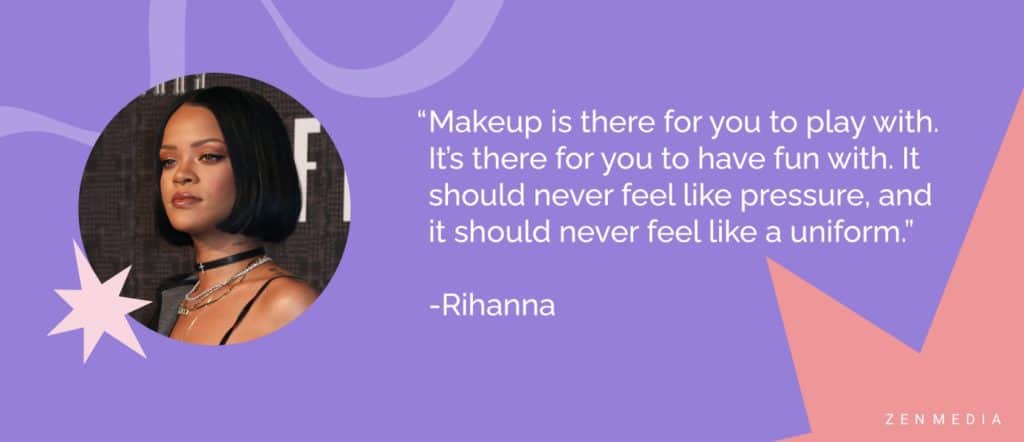Let’s face it: on the internet, information spreads like wildfire—especially when it comes to controversy.
It is difficult—and at times, impossible—to control the public’s perception of different brands and industries as a whole. The growing power of cancel culture via social media can cause companies’ reputations to crumble in 280 characters or less.
In 2022, consumers are looking to support brands that stand for more than the products they are selling. From fighting climate change to advocating for human rights, social responsibility is the new must-have for the public when making monetary decisions.
Related post: eCommerce Trend for 2022: An Increase In Socially Responsible Businesses
But how can businesses maintain the public’s support when their industry is a part of the perceived problem?
The 2005 dark comedy, Thank You For Smoking (based on a novel by the same name) touches on the challenges of being in an industry with a negative public perception. It’s an extreme example. It follows a lobbyist and spokesperson who is trying to downplay the connection between cigarettes and the many health issues that they cause. While the movie focuses on a lobbyist—not a marketing and PR department—understanding how public perception is influenced by messaging is a good lesson for any marketer and PR professional.
The ultimate angle that the protagonist of Thank You For Smoking leans on is public demand. The product has obvious downsides and dangers, but many products do. He compares tobacco to unhealthy foods, alcohol, and so on—and while there are flaws in these comparisons, it does point out how public perception is variable and how brands are able to excel amidst some of the challenges their products pose.
Now, hopefully, your clients aren’t in legal headlocks trying to position themselves while dealing with a product that causes lung cancer. But maybe you do have a client in a controversial industry, or maybe a client has recently become controversial due to bad press or changes in public perception that are outside of your client’s control. In the end, regardless of where your clients stand in the public’s eye right now—everything is subject to change.
That’s why it’s imperative for marketers to understand public perception and how to work with it.
Some industries and the brands that sit within them regularly find themselves on the public perception tight rope. For instance, in a matter of seconds, a beauty company can go from a fun brand that’s about creativity and originality, and it can transition into a superficial or even misogynistic brand under the public’s waffling gaze. Discussions about unhealthy expectations for women and narrow depictions of beauty have dominated the conversation in the beauty space. But smart brands, like Fenty Beauty, are making sure that they refocus the conversation so that they can stay on the safe side of public perception. Fenty Beauty CEO and celebrity Rhianna publicly said: “Makeup is there for you to play with. It’s there for you to have fun with. It should never feel like pressure, and it should never feel like a uniform.”

And beauty isn’t the only industry on the tight rope. A social media app can come under fire due to inappropriate content or too much user speech policing. The public could proclaim a fossil fuel company’s products as pro-pollution or declare companies that work in cryptocurrencies as being tied to the dark web. Once a narrative is written, it can be hard to erase.
This is where a strong PR campaign can come in and save the day. Although “It’s PR, not ER” is a common saying within the industry, the help of a strategic public relations team can help change the public’s perceptions and boost sales.
Here are some ways that a PR campaign can fight negative public perceptions and “un-cancel” companies.
How a PR Campaign Can Influence Public Perceptions
Fine-Tuning A Brand’s Messaging
A successful PR campaign takes control of a brand’s narrative by creating positive content. It elevates brands’ messaging through press releases, social media posts, paid ads, and communication with media outlets.
In order to do this, a publicist must fine-tune the language they are using to describe the company’s products and values.
Shell PLC is an example of a company that fine-tuned its messaging to change public perception. Rather than continuing to market itself as a multinational oil company, it is now describing itself as a “global group of energy and petrochemical companies.” Key phrases like “decarbonization,” “sustainability,” and “cleaner energy” are spread across its entire website, proving that a brand’s word choice is crucial in changing the narrative.
Of course, the brand has to put its money where its mouth is. A pretty press release cannot make miracles happen alone—the company must be true to its word.
Shell PLC remains dedicated to mirroring its messaging by sharing its plans to become “a net-zero emissions energy business by 2050.” From progress reports to billion-dollar investments in renewable energy solutions, the company went from zero to sustainability hero—all with the help of a strong public relations team.
Pitching New Angles
When fighting negative perception, it is important to get creative. Rather than focusing on a brand’s challenges, a PR manager can pitch new angles to outlets. This is a strategy that many beauty companies employ, specifically ones that are not cruelty-free.
Animal testing is a controversial topic within the industry. Many beauty brands get around it by diverting the public’s attention to their more positive initiatives. MAC Cosmetics, for example, has been criticized for not being an entirely cruelty-free company. Although they do not test on animals in most countries, they do submit to animal testing where required by law.
In order to sell their products in China, it is required that their products be tested on animals. With a growing number of makeup companies going cruelty-free, customers are unimpressed by MAC Cosmetics’ choice. Thus, negative perception led to misinformation, and many began to believe that MAC tests on animals in every market.
Instead of focusing on these challenges, MAC Cosmetics buries the bad (and, at times, incorrect) press by promoting its other philanthropic efforts. Their Viva Glam campaign, for example, gives back to human rights-related charities. Their efforts to pitch new angles to the press have brought the brand more positive media attention recently, which is shifting the public perception back in their favor.
Authenticity Wins
A company’s trust factor and authenticity are of utmost importance to customers. 86% of consumers say that authenticity is a deciding factor when choosing to buy a product. 57% of consumers think that less than half of companies out there create content that is genuine.
So, creating a community that feels connected to your brand will boost sales. But how can PR do that and fight negative public perception—and even misinformation—at the same time?
Chipotle is a great example of a brand that reclaimed its loyal following’s trust. The restaurant chain’s reputation took a turn after several E. Coli outbreaks in 2015. Over 1000 customers became sick, and over 43 restaurants temporarily closed. Chipotle agreed to pay a $25 million fine after violating food-safety codes.
So what did they do? To regain the public’s trust, Chipotle launched its “For Real Campaign.” Combining owned, paid, and earned media, the chain emphasized the freshness of its ingredients.
Press releases and media hits drove the company’s values of transparency and authenticity forward. To manage public perception independently, Chipotle created a secondary Instagram account, @chipotleforreal, to educate the community about each of its 51 ingredients. This account tackled misinformation about its health standards.
The PR campaign’s slogan helped rebuild the brand’s community through genuine messaging and a bit of humor:
“The only ingredient that’s hard to pronounce at Chipotle is ‘Chipotle.’”
On top of this, the chain launched the Chipotle Rewards program for its loyal customers. Giving back to its supporters amidst its controversy, the company wanted to “drive digital innovation and make the brand more accessible.”
All of these marketing tactics allowed Chipotle to rebuild its community and continue expanding. According to Statista, it remains the second-largest fast-casual restaurant chain in the world (based on unit count).
Creating a Community
Changing public perception means creating a community to combat it. Just like Taylor Swift needs her “swifties” and Star Trek needs its “Trekkies,” brands need their devoted customers to help maintain positive public perception. Rather than keeping the public at arm’s length, a successful marketing and PR campaign should focus on inviting them in.
No matter what PR strategies you decide to take, remember that the goal is to rebuild the trust in your brand.
Want to plan a digital PR campaign but don’t know where to start? Contact us today. We’re here to help.







